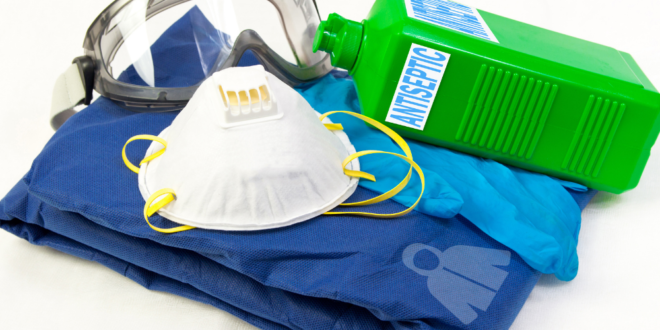Respiratory security has acquired critical titles throughout recent years, generally because of the invasion of the COVID-19 pandemic. Noticeably, expendable covers became trendier during the pandemic, provoking organizations to increase their creation limit. The pervasiveness of irresistible and destructive infections, like the Ebola infection and COVID-19, has prodded the utilization of Respiratory Protective Equipment (RPE). Worldwide interest for Personal Protective Equipment (PPE), including RPE prompted a remarkable acquirement by states and different partners, strengthening the opposition for PPE. Fortune Business Insights™ gauges the market for respiratory defensive gear to contact USD 10.97 billion by 2028.
In like manner speech, respiratory defensive gear safeguards the wearer against the inward breath of dangerous substances in the work environment air. Respiratory issues could create because of ill-advised utilization of RPE. They could be persistent and deadly now and again. As per the Health and Safety Executive (HSE), around 12,000 passings every year are credited to word-related respiratory illnesses. Anyway, what has incited expected forbearance from wearing respiratory security? One reason might be that the gear was awkward. It can lead the singular wearer to not wear the gear appropriately, consequently limiting the degree of security given by respiratory defensive hardware. Subsequently, major respiratory assurance gear makers could underline developments and innovative headways.
Air-purifying Respirators Gain Ground
Dramatic interest in expendable veils, including careful covers and N95 covers, has incited respiratory defensive gear makers to expand the creation of Air-Purifying Respirators (APRs). These respirators work by eliminating fumes, gases, and vapor sprayers using cartridges, channels, and canisters. The hardware might comprise half or full facepieces and ought to be worn for high-risk spray-producing techniques. A portion of the bits of knowledge into APRs are depicted underneath:
Ø Powered Air-Purifying Respirator (PAPR): These respirators can be used to protect against particles, vapors, and gases. They are reusable components and battery-powered with a blower. PAPR could be selected if the N95 respirator choices are unavailable or the wearers have facial deformities and facial hair.
Ø Elastomeric Full-Facepiece Respirator: The equipment is reusable and can be used to protect against vapors, gases or particles. It could be a more effective face seal vis-à-vis filtering facepiece respirator.
Healthcare & Pharmaceuticals Remain Valuable Proposition
There is no rejecting that medical services experts are presented with different body liquid defilement, blood, and synthetic compounds. A few perils, including drug openness, natural risks, respiratory dangers, blood-borne microbes, squander sedative gas openness, and laser perils have incited producers to implant assets into cutting-edge respiratory defensive gear.
Taking into account the urbanization and industrialization pattern, RPE makers and providers have focused on the requirement for defensive hardware in the medical services vertical.
Emergence of Protective Equipment in Oil & Gas Companies
An expanded number of oil and gas extraction laborers has capitulated to a large group of risks in this area. Oil and gas items and synthetics could be destructive, aggravating, and combustible. Oil and gas wells will generally get laborers presented to hydrogen sulfide gas. Air sanitizing respirators have cartridges intended to channel airborne particles and synthetic substances, including corrosive gases and natural fumes. The utilization of full-face respirators, gas screens, independent breathing contraptions, and compact air sources has gotten some forward momentum.
Provided Air Respirators (SARs) have become exceptionally pursued across significant economies, generally because of their capacity to make a crisis escape from the Immediately Dangerous to Life and Health (IDLH) site conceivable. In addition, air refining respirators could be less successful, attributable to impurities and the absence of oxygen. SARs are justified in working environments where:
- Chemicals are poorly absorbed in the atmosphere
- Airborne contaminants fail to emit detectable odor taste
- Airborne contaminants exceed the approved limit for an air-purifying respirator
Oil and gas industry laborers evaluate the assignment and decide the term of purpose while picking gear, taking into account how much breathable air they need all through the utilization.
Regulatory Bodies Rise their Efforts
Administrative bodies, including OSHA, EPA, and NIOSH have expanded their endeavors to support working environment security. Ventures are supposed to have a point-by-point danger evaluation and conform to OSHA’s Respiratory Protection Standard 29 CFR 1910.134 and OSHA’s Toxic and Hazardous Substances Standard 29 CFR 1910.1000.
Careful and N95 veils have become super patterns among laborers and representatives across industry verticals. In doing as such, worker well-being preparing programs, alongside bullish government approaches, will pick up speed. Moreover, administrative bodies could help their testing limit and set their quality administration framework.



